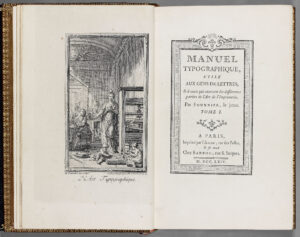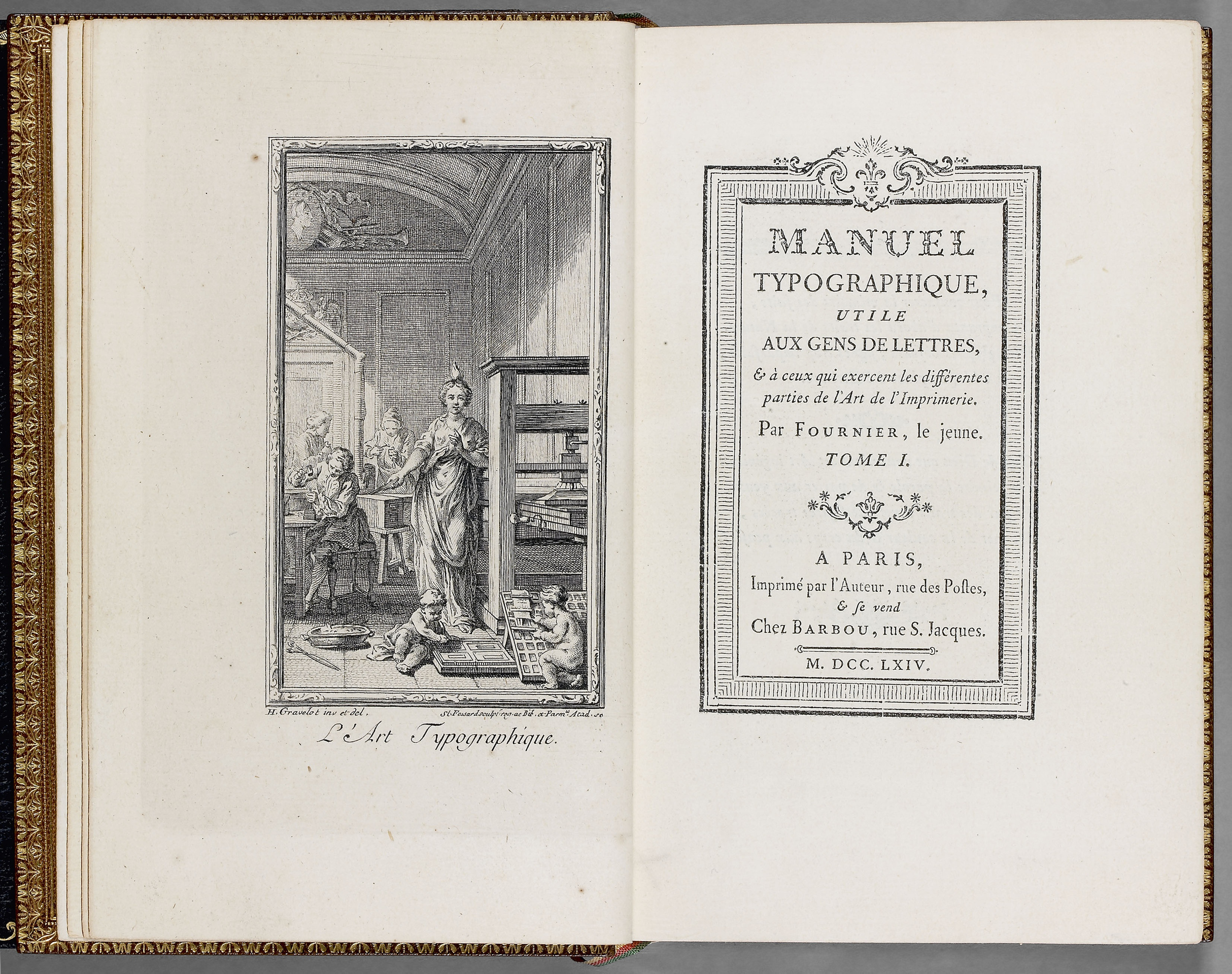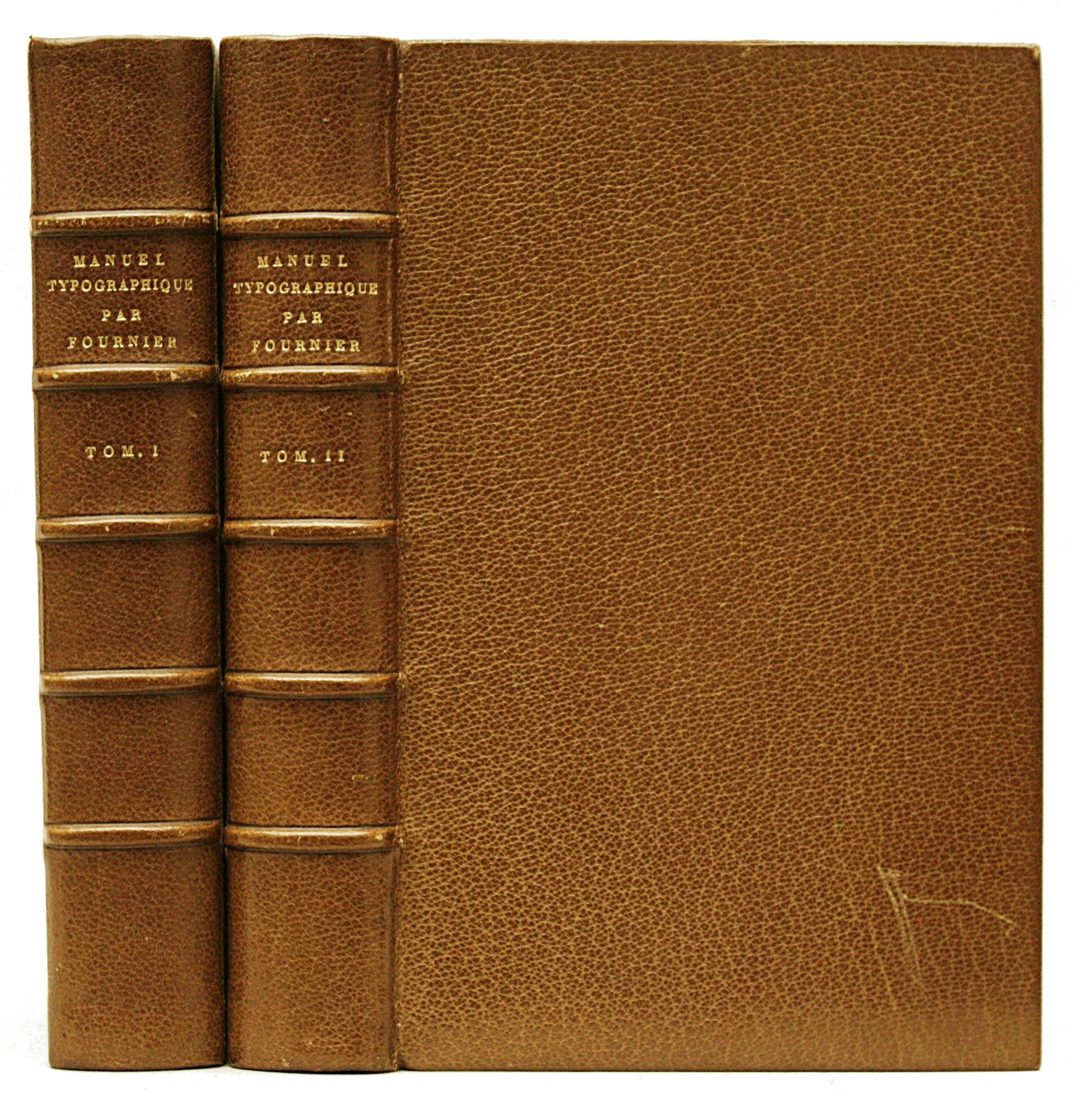Paris, Imprimé par l’Auteur, & se vend chez Barbou, 1764-1766 [1768].
2 parts in 2 volumes 8vo [174 x 110 mm]: I/ (2) bl. ll., 1 engraved frontispiece, 1 portrait of the author, xxxii pp. of notice to the reader, 323 pp., (5) pp., 16 double page plates; II/ 1 frontispiece, 1 engraved title, xliv pp. of notice to the reader, (2), 306 pp., 16 double page plates.
Bound in full 19th century light-brown morocco, spines ribbed and decorated with blind-stamped fillets, inner gilt border, gilt edges. Binding signed A. Motte.
First edition of the most famous work dedicated to typographical art.
Brunet, II, 1359; Cohen, Manuel de l’amateur de livres à gravures du XVIIIe siècle, 410 ; Rahir, La Bibliothèque de l’amateur, 431; Bulletin Morgand et Fatout, 10316 et 6118; Catalogue Destailleur, 937; Bigmore & Wyman, I, p. 228; Sander 728;
« The first volume of this interesting work deals with engraving and the founding of printing characters, the second one (only published in 1768) contains the proofs of the different kinds of characters. These two volumes should have been followed by two others; one of them would have dealt with the art of printing, and the other one with the history of famous typographers; but the author’s death deprived us of this continuation. » (Brunet)
« The first volume of the Manuel typographique contains the description of the first two parts; which are the engraving or cutting of the characters, and the founding of those characters. […] We also find in it the history and details of the new music characters, invented by Fournier, produced by him and approved by the Académie Royale des Sciences. […] The second volume is divided into six articles. The first one contains an example of roman and italic characters usually used in printing, with he various nuances of size which distinguish them. The second one contains what concerns printing ornaments. The third one expounds the models of various characters peculiar to some countries. The fourth one contains the examples of the different eastern characters, Hebrew, rabbinical, Samaritan, Coptic, Armenian, Ethiopian and Greek. The fifth one contains musical and plainsong notes. The sixth one presents the signs that human mind invented to express its ideas, showing a series of each language alphabets.[…] A very peculiar explanation of those different alphabets ends the volume, where there are still interesting details about the main European foundries […] »
(Les Siècles littéraires de la France, pp. 133-138).
The second volume comprises 250 pages of specimens of French and foreign characters, including 101 alphabets of modern and ancient languages and 5 folding music plates of which one is engraved in black and red. Those specimens represent Fournier’s stock that will influence European printing until the end of the 18th century.
The illustration is composed of two frontispieces engraved by Fressard after Gravelot and De Sève, of a portrait of the author engraved by Gaucher after Bichu, and of 16 double page plates at the end of the first volume that show the different instruments characteristic of typographical art.
This copy comprises an additional series of the 16 technical plates, inserted at the end of the second volume.
A large-paper copy (height: 174 mm vs 165 mm for an ordinary copy) coming from Robert Hoe’s collection, an important American bibliophile.
This association is especially interesting because Robert Hoe (1839-1909), printing press manufacturer and inventor of new printing methods, is a personality that marked the printing history in the 19th century.
See less information



